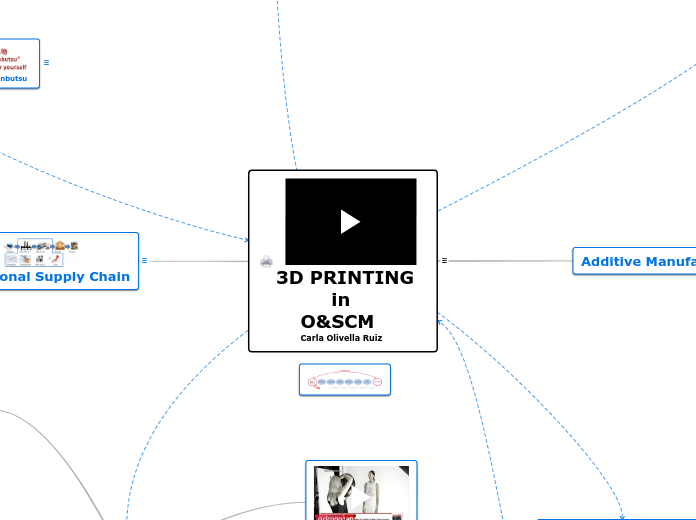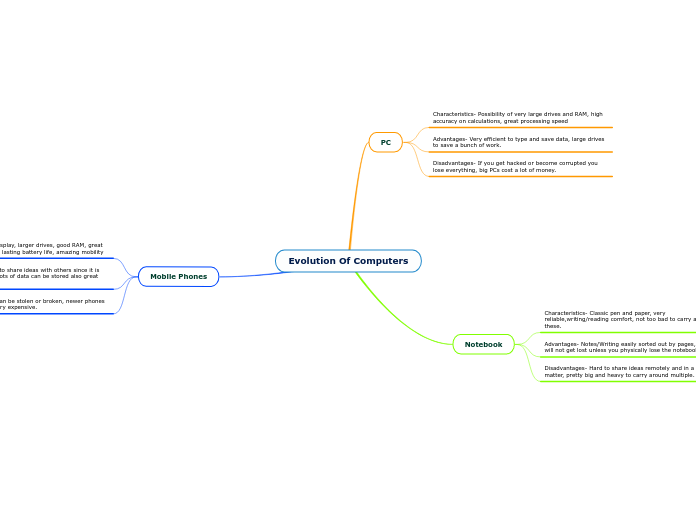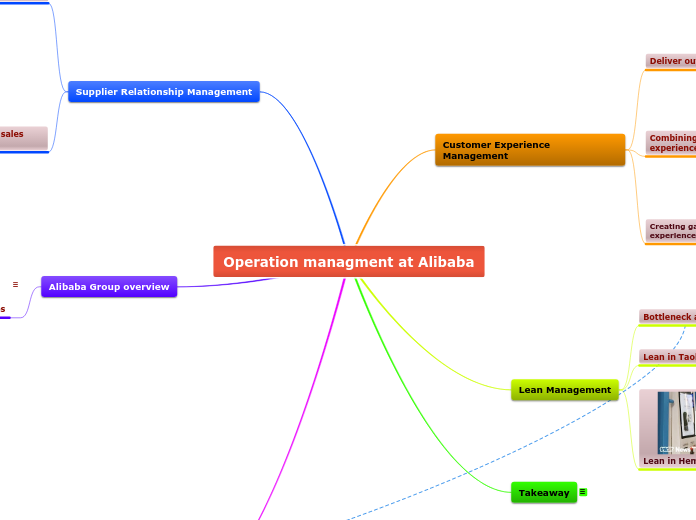Key takeaways
3D printing is a great technology but it is not for everyone. It cannot be used by all industries. There are also size constraints. However, technology is advancing and this problem is being reduced.
In order to use the technology, one must have knowledge on CAD.
It is not as simple as it seems. Depending on the material of the filaments, the printed pieces have to be sanded, primed and colored. However, this is, at the same time an advantage because it allows the costumer to have more options.
3D printing can be part of the design process, and not necessarily part of the entire manufacturing model.
Technology is sometimes faulty and it is common that 3D printing machines fail and have to be stopped for maintenance.
Mass Customization
When products are customized, goods are made to order which means inventory levels would fall. This would consequently have the effect of reducing warehousing requirements.
Build-to-order
3D printing supports a build-to-order, mass customization situation, and in some occasions it allows for goods differentiation to be deferred in the supply chain process.
Build-to-order production strategies could essentially have an effect on the manufacturer-wholesaler-retailer relationship.
Prototyping
3D printing allows to create as many prototypes as needed to ensure the maximum functionality of the product as well as its aesthetics and ergonomics. It does so in an economic manner that allows repetition in order to ensure on time delivery for manufacturing.
Lean Manufacturing
3D printing actually helps to reduce cost, avoid waste and stocks, as only what the customer orders is created. It improves the quality of the product and shortens lead time.
AMT
3D printing is an advanced manufacturing technology itself.
JIT
Goods are produced on demand, thereby reducing inventory costs.
Heijunka
3D printing eliminates the unpredictability of customer demand patterns and the manufacturing waste, as the production is on demand.
Kaizen
3D printing allows for Kaizen (continuous improvement) to take place, as the works and processes are much more straightforward and less complex and the technology itself provides with the possibility of improving the design process.
Muda
Reduction or elimination of waste of:
- Transport and useless displacements
- Stock and inventory
- Motion of workers
- Waiting and lead time (of production and delivery)
- Overproduction
- Overprocessing
- Defects (the softwares used have a quality control previous to the print)
Genchi Genbutsu
Part of the 3D printing philosophy is "go and see". One has to be involved in the process from the very early stages of the design phase until after the product is printed in order to ensure there are no problems in the manufacturing process.
Total Productive Maintenance
3d printing has the advantage that there is no risk when it comes to work accidents. Defects are minimized using the quality controls of the software needed before the print. During each print there is no stops.
PDCA
Before using the technology one must plan what is it that is going to be produced, then one must do it (design it), check it (with the software, which in a sense relates to Poka Yoke) and act (print).
Stock Management
3D printing allows manufacturing to be more agile and to react to customer demands in a better manner. As a result, there is less WIP and finished products in transport and in stock, as well as less obsolescence of existing stock.
Raw materials
and supplies
As a result of dealing with the storage and transport of the raw materials which feed the 3D printers, a new sector of the logistics industry emerges to deal with it.
Production
There are no switching costs because there are no moulds needed. As a result, 3D printing installations give companies the ability to rapidly respond to shifts in the market demand and to introduce new products in a quick and inexpensive manner.
3D printing also allows to have pieces needed for manufacturing printed, which decreases waiting times with suppliers.
Transport & delivery
Orders are fulfilled directly by the manufacturer and are delivered to the store or directly to the home of the consumer.
Products that were previously produced in China or other Asian markets can be near-sourced as the manufacturers can produce the products themselves. This would reduce shipping and air cargo volumes.
As a result, there are shorter lead times from order to delivery.
Inventory
Despite having higher cost per units, thanks to reduced storage and less outdated products, the supply chain costs may be lower for the additive manufacturing model than for the traditional model. The feedstock becomes the inventory and this process is perfect for small batches and demand that is not certain.
Operational Innovation
More adaptable design processes could unleash a new wave of product innovation. Technology has the prospective to redefine traditional manufacturing methods in the long term. Additive manufacturing offers prospects for innovative marketing stratagems and distribution channels.
Examples of Operational Innovation can be found in different industries such as the food, fashion, toy, furniture and automotive induestries.
Food industry
Other interesting links:
- https://xtalks.com/how-3d-food-printing-technology-is-shaping-the-food-industry/
- https://www.3dnatives.com/en/food-3d-printing220520184/
Furniture industry
Automotive industry
Toy industry
This video is a bit long, so just slide the time bar to get a quick glance of how the industry can be innovative and how the actual process works.
Fashion industry
Match
Supply & Demand
As 3D printing is mostly an on demand industry, matching supply and demand is covered, as items are produced when they are ordered by the customer or consumer. This adds value to the enterprise.
Pricing
Manufacturing costs can be cut as a result of lower setup and tooling costs
Maximizing
efficiency
- Costs and time are reduced for the manufacturer (supply of materials, production, inventory...)
- Time from order to delivery is minimized
- Waste is minimized (only the material needed is used, the only excess is the material used to create the base structure amongst which the product is printed)
Flexible location
Additive manufacturing makes it feasible to have pieces printed in remote sites, as distribution of goods is not a restriction anymore
New Services
Offers manufacturers, customers and consumers the possibility of customizing and creating whatever they need to satisfy their needs from scratch and in a shorter amount of time.
Increasing
customer
participation
Customers can be more involved in the manufacturing process through customization and design, as they have the ability to create whatever they want (if they have the skills to do so) or to request and check whether what is being done is what they look for.
Standardization
The process itself is quite standardized: we need a CAD software such as AutoCAD or Rhinoceros, we have to create the design, save it as an .stl, and run it through a layering software which will allow us to send it to the computer.
The settings can be saved and the item can be reproduced as many times as needed.
3D PRINTING
in
O&SCM
Carla Olivella Ruiz
https://www.ge.com/additive/additive-manufacturing
I chose this topic because since I am a product designer, I have been closely exposed to it for prototyping purposes.
It is a topic that fascinates me. I consider it to be very extense, yet, as mentioned, I have only been exposed to it during the design phase of manufacturing. I was interested in learning how 3D printing could affect the organizational, operational and supply chain aspects of a company as a whole.
Traditional Supply Chain
- Products are mass produced
- Manufactured goods are "pushed out"
- Distribution = warehouse network to customers
- Long lead time
- High transport costs
- Sustainability - large carbon footprint
Additive Manufacturing Model
- Customized production
- "Pulled" by end customer demand
- Distribution is directly to the customer
- Short lead time
- Low inventory levels
- Low transport costs
- Low carbon footprint
Environmental impact
(Video)
http://fortune.com/2018/07/23/3d-printing-global-warming/
• Less negative impact on environment
• Reduce carbon footprint
• Reduce the waste that accrue in traditional manufacturing
Quality improvement
• Reduce production waste
• Improve quality
• Incorporate customer feedback
• More optimum products across many industries
• Eliminate excess parts that cause drag and add weight
• Management of demand uncertainty
Cost Saving
• Eliminate the need for large bulk inventory
• Eliminate the need for high volume production facilities
• Reduce transportation cost
• Eliminate penalty for redesign
• Reduce the size of an economical lot
• More economical and effective packaging solutions
• Vetting out designs: offer customized designs at lower cost
• Reduce labor inputs: eliminate low level assembly workers
• Reduce required tooling and machining centers
• Economical mass customization
Speed responsiveness
- Eliminate the time lag between design and product
- Shorter lead time
- Enabling on-demand manufacturing
- Improving process flexibility
- Supply chain disintermediation









